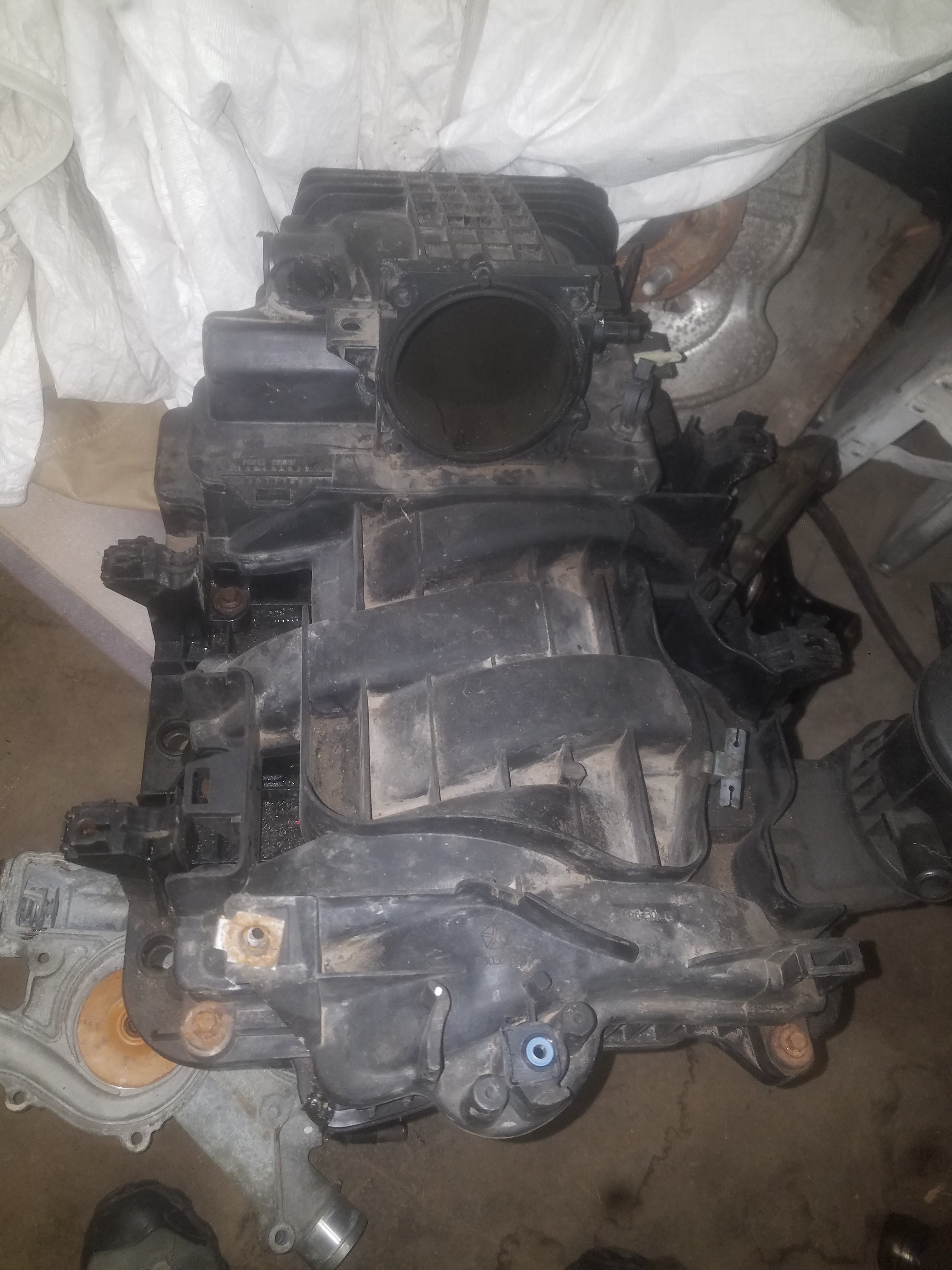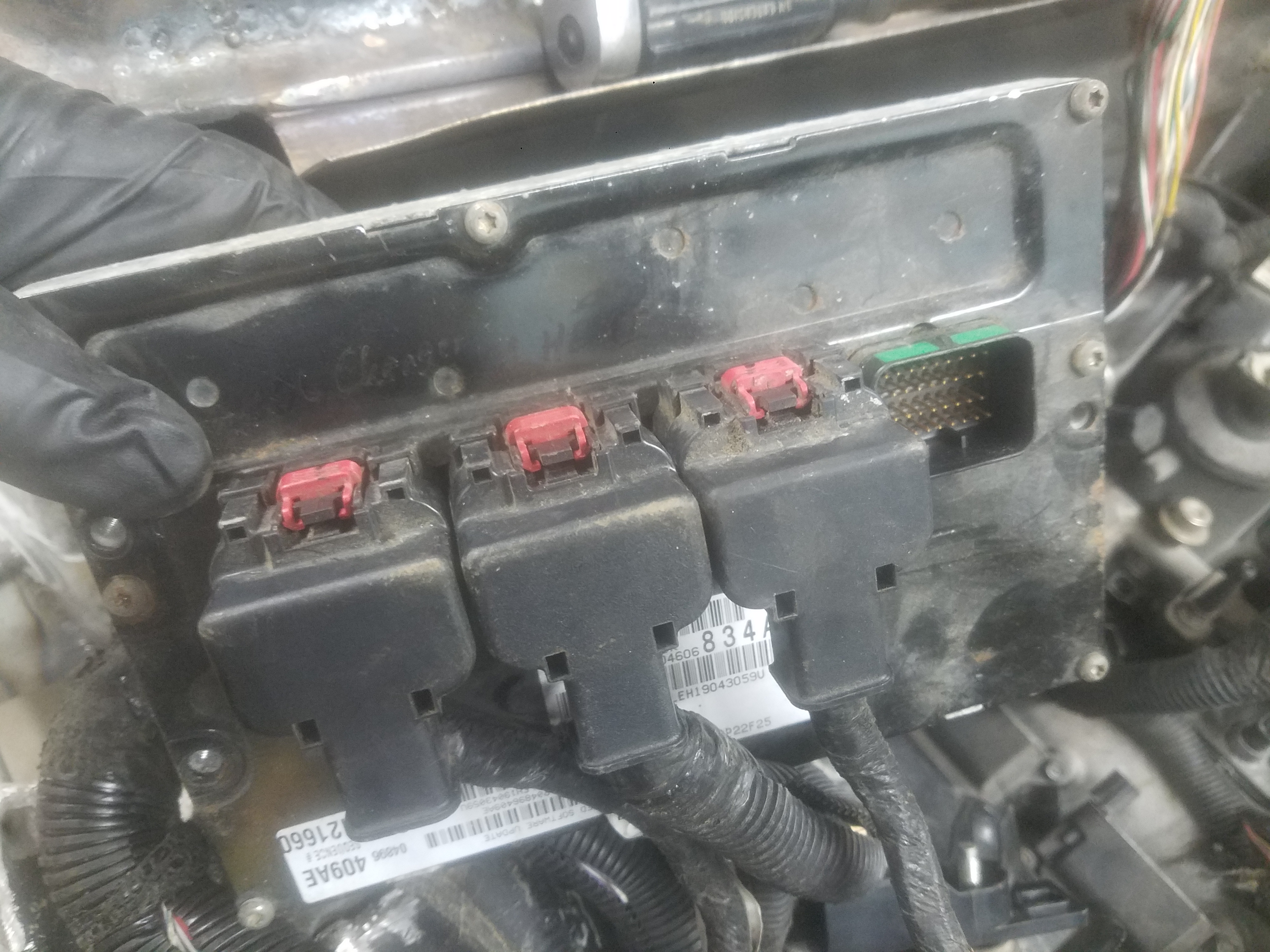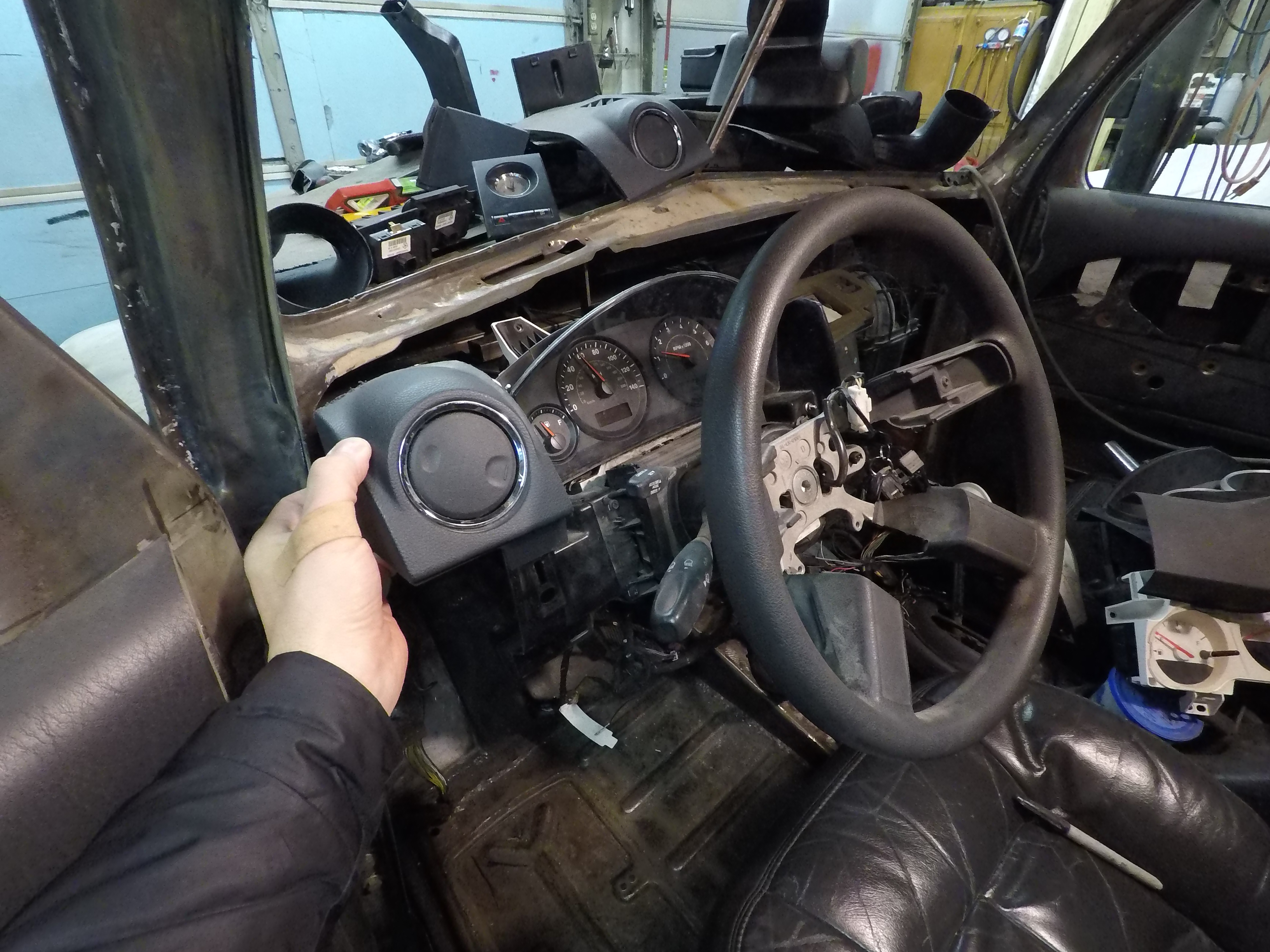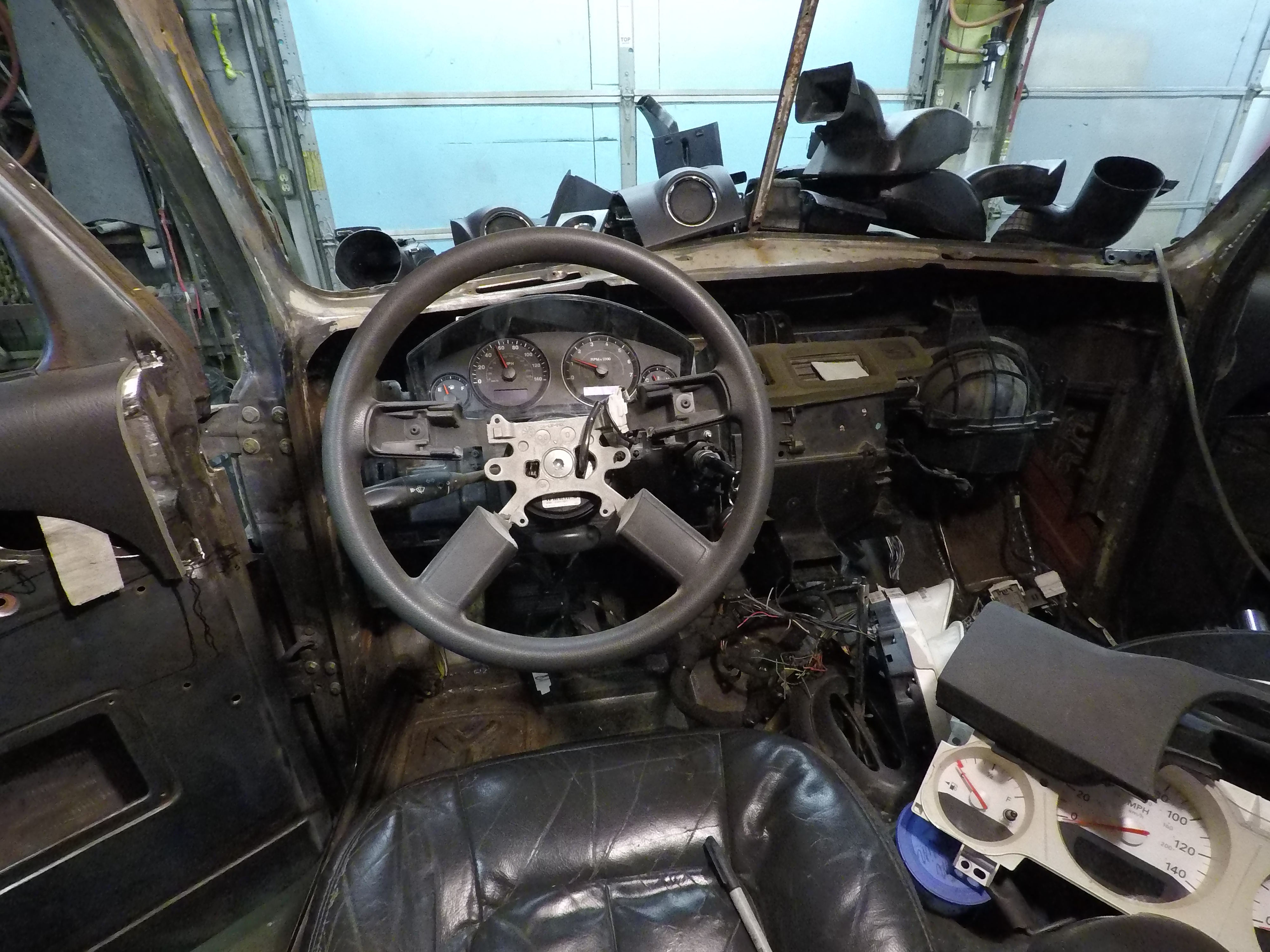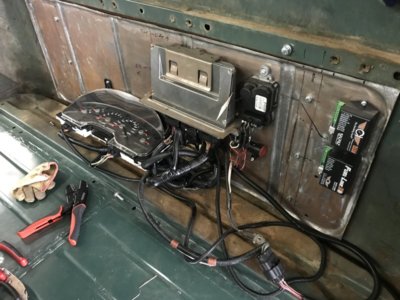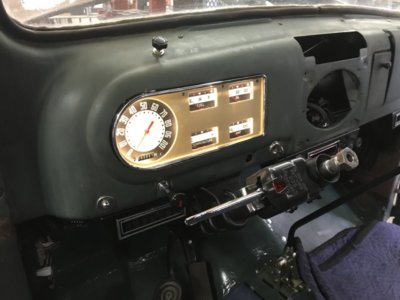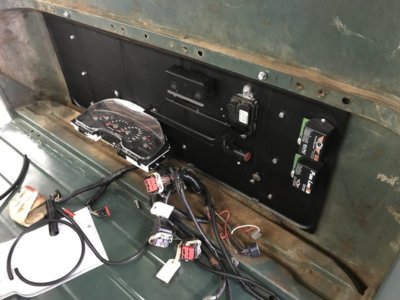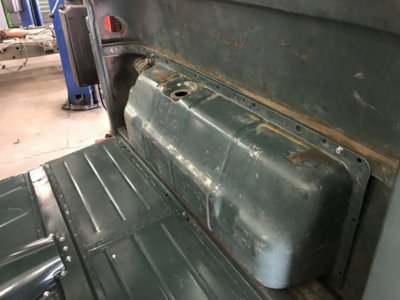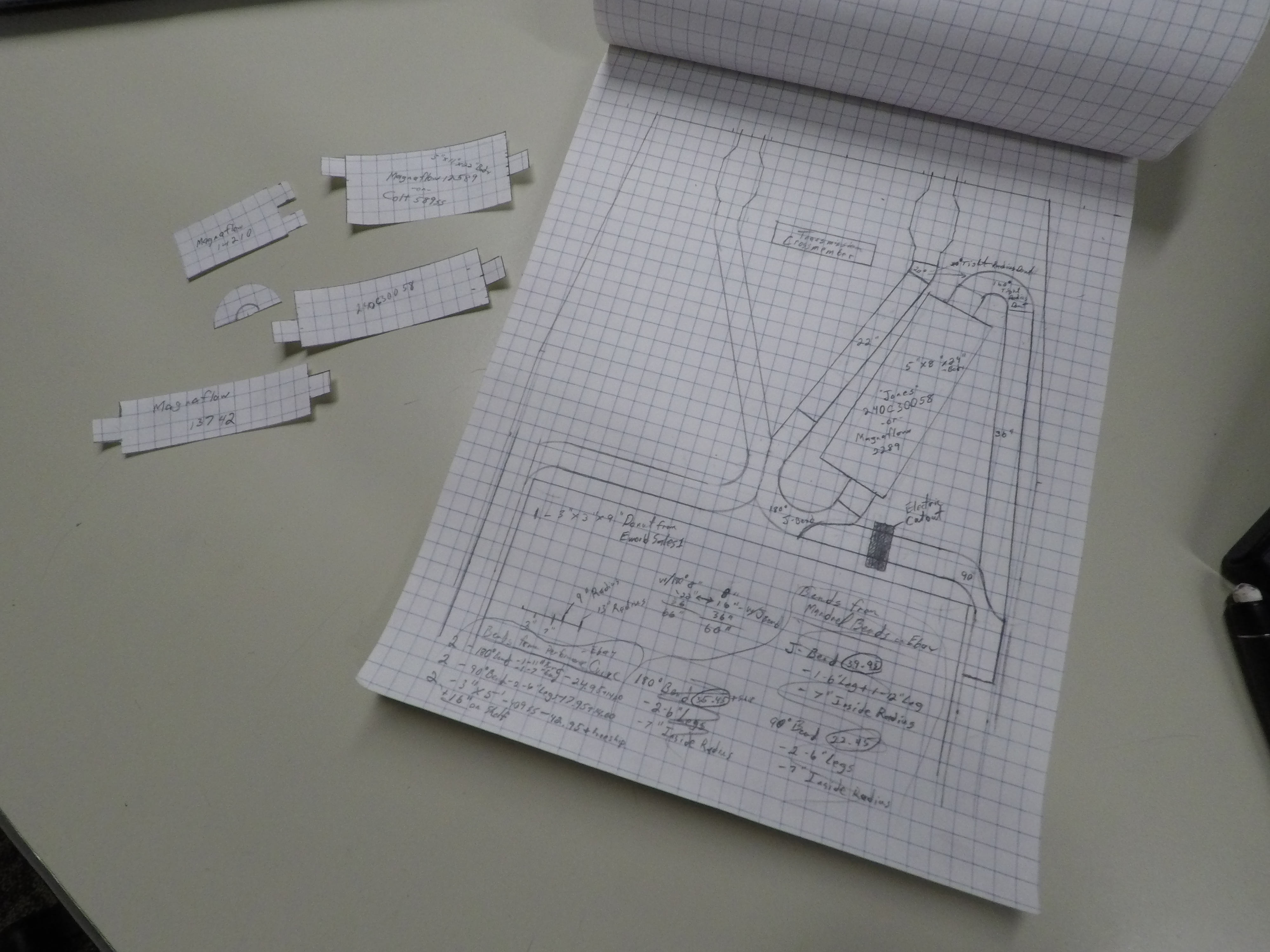I've come to the conclusion that the '06 Charger wiring was not engineered at the same time as the '06 Jeep Grand Cherokee. Some of the wiring is obviously the same, but there are things that make me want to take a step back.
Here are some of the highlights...
1. The Charger cluster is looking for input from both fuel pumps. I am still using the Charger (saddle bag type) fuel tank, so I will still have two pumps. Does the cluster do more than simply average the two levels and present the output on the gauge? If so, then, I know I can just pick of the two wires and use it to feed the Grand Cherokee (GC) fuel gauge. My worry is that the cluster may actually have some "logic" to turn one pump on or off based on how much fuel is in that side of the tank.
2. The cluster in both these donor vehicles seems to be hub for all the power windows and power locks on the vehicle. So, it's as if the cluster takes the input from the door switches and actually drives the circuitry that actuates door locks and windows. However, there are differences in how they work. The Charger splits out the the "passenger door lock switch return" from the "driver door lock switch return". I am pretty confident I can safely pick one of these to use and it will work. Similarly, the Charger has separate pinouts for the "Door lock driver left doors" and "Door lock driver right doors" while the GC simply has a pinout labeled "door lock relay control." This is actually another difference between the two clusters... While the Charger lists "... driver" pinouts for the door lock and unlock functions, the GC lists "... relay control" pinouts. Presumably (I need to look closer at the connecting wiring schematics to confirm), the GC uses more relays to control these functions than the Charger does.
3. The Charger cluster takes input from the ignition to see if the key is inserted. But the GC cluster doesn't care. The GC sends the "key in sense" info to the steering control module, of all things. This may not be a big deal... don't know yet.
4. Here's a fun one... The GC cluster has no pinout for the "traction control switch sense" What I'm interpreting here is that the Charger cluster tells the canbus system if I want to shut off the traction control system. Um... I always want the traction control system shut off. I need this input to work.
There are other differences too, but nothing insurmountable.
Here's my real question... Can the canbus system handle two gauge clusters plugged in at the same time? Didn't see that coming. Did you?
;) I can make all kinds of changes to the wiring... Or, I could remove the dials and extra plastics from the Charger cluster and tuck it in the dash to act as a module to handle the power door locks, power windows, heated seats, interior lighting, etc. Then, I would simply hook the power, illumination, door ajar sense wires, ground and canbus wires to the GC cluster and put it in place. But would it work???
I know other people have used different instrument Dodge/Chrysler/Jeep clusters for their builds... Anyone care to weigh in with helpful suggestions? Thank you everyone!
2005-2008 Jeep Grand Cherokee WK Instrument Panel Pinouts
2005 - 2007 LX Platform Instrument Panel Pinouts
